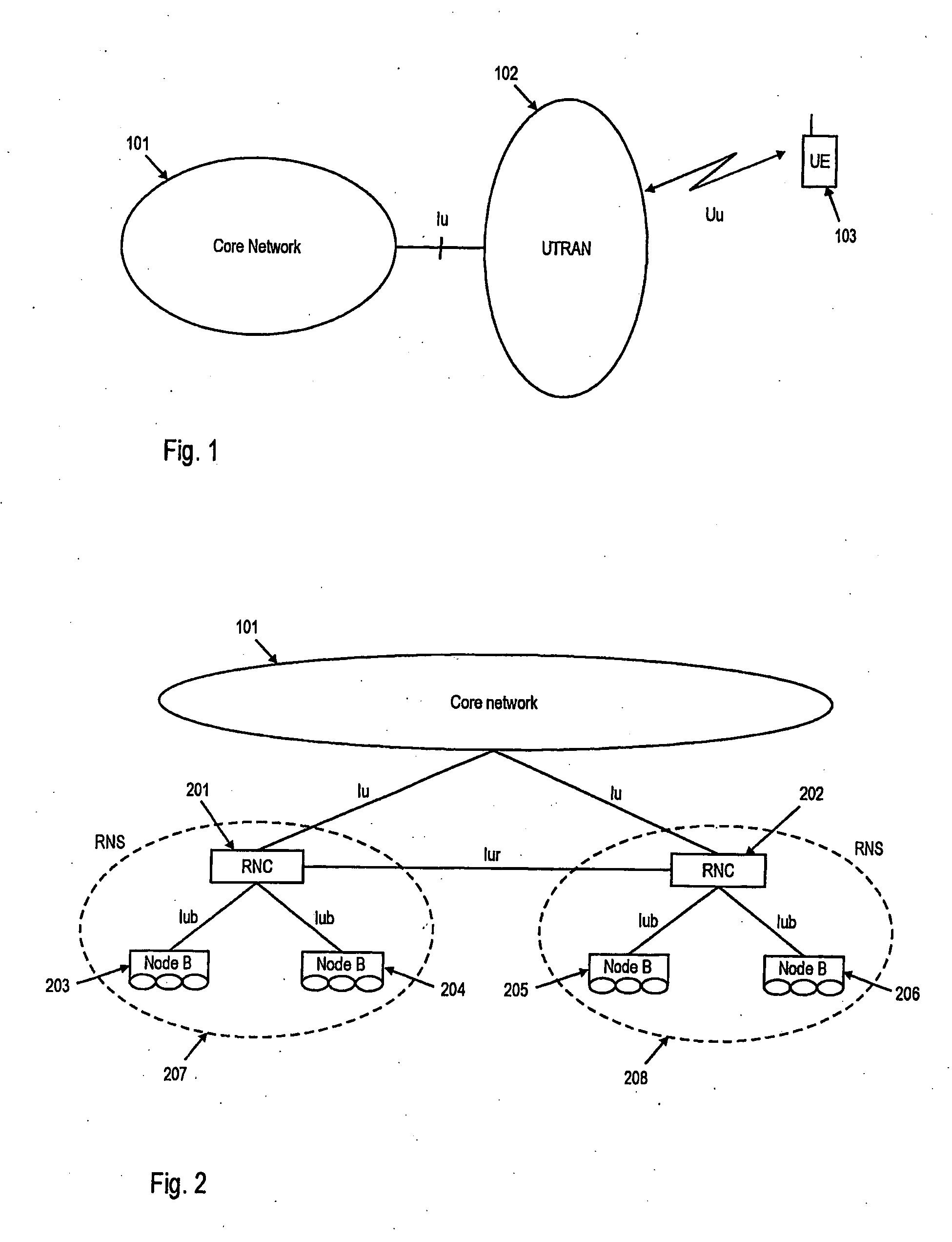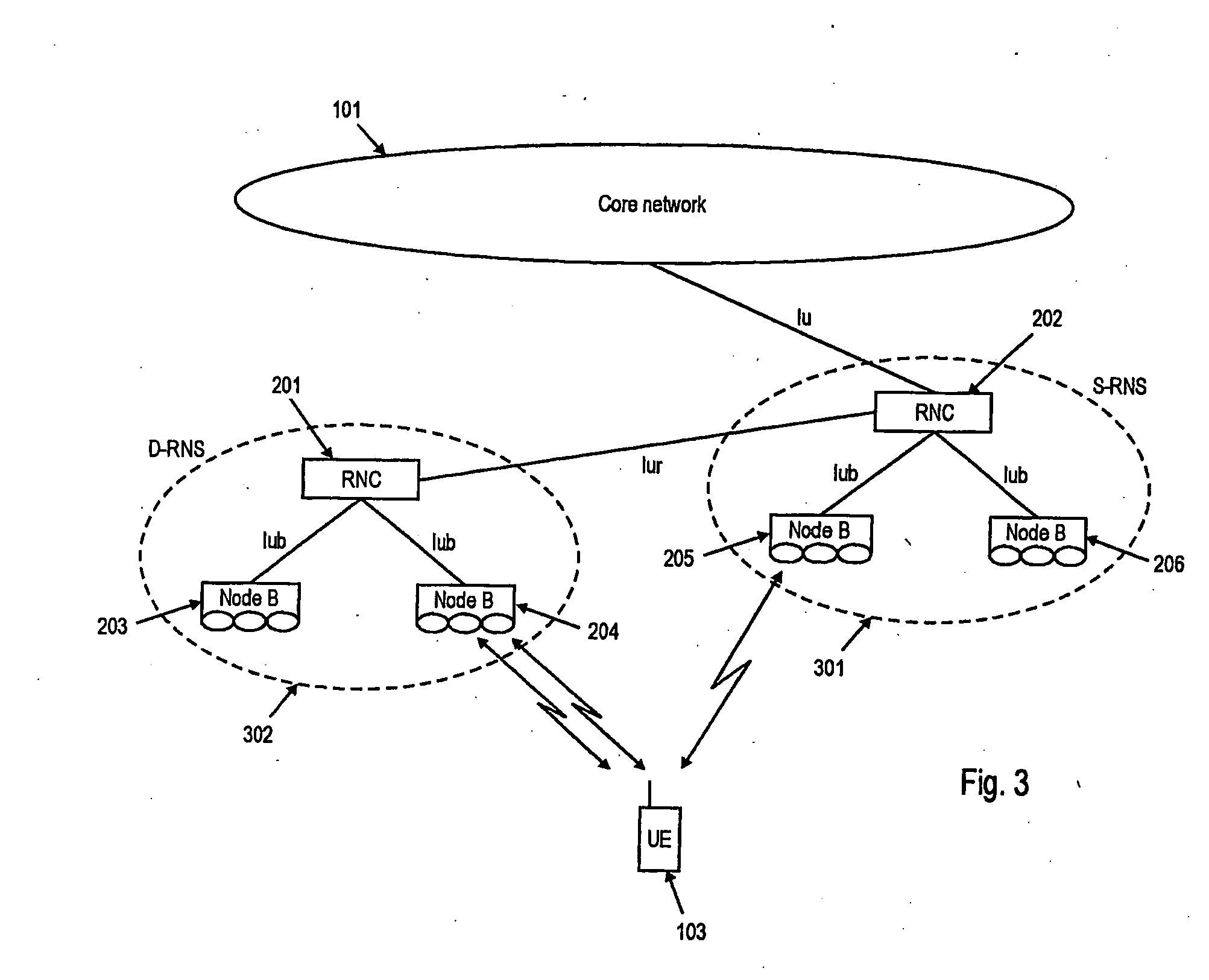Method for Switching Between Asynchronous and Synchronous Harq Retransmission Mode
- Summary
- Abstract
- Description
- Claims
- Application Information
AI Technical Summary
Benefits of technology
Problems solved by technology
Method used
Image
Examples
Embodiment Construction
[0116]As explained above, according to an aspect of the present invention the problem of synchronous retransmissions in interference critical situations may be mitigated by means of additional feedback information sent from Node B in the downlink to the UE.
[0117]Additional feedback Information may for example be transmitted in form of a negative acknowledgment indicating a (re)scheduling of the incorrectly received data packet—NACK-S(chedule). The new feedback information NACK-S may be signaled in the downlink from a Node B to the respective UE when a data packet is received incorrectly at Node B and the uplink interference situation in the cell is critical, e.g due to heavy traffic. The NACK-S may indicate to the UE not to send the retransmission of the data packet after the defined time Tsync upon having received the negative feedback (synchronous retransmission), but to monitor the scheduling related downlink control channel (scheduling grant channel) for a scheduling assignment....
PUM
 Login to View More
Login to View More Abstract
Description
Claims
Application Information
 Login to View More
Login to View More - R&D
- Intellectual Property
- Life Sciences
- Materials
- Tech Scout
- Unparalleled Data Quality
- Higher Quality Content
- 60% Fewer Hallucinations
Browse by: Latest US Patents, China's latest patents, Technical Efficacy Thesaurus, Application Domain, Technology Topic, Popular Technical Reports.
© 2025 PatSnap. All rights reserved.Legal|Privacy policy|Modern Slavery Act Transparency Statement|Sitemap|About US| Contact US: help@patsnap.com



